Abstract
Primary allogeneic antiserum raised in C57B1 mice directed against a DBA/2 lymphoma, L5178Y, was found to contain at least two types of opsonic activity associated with the γ-globulin fraction of the antiserum. One was found at a low level corresponding to cytotoxic activity, binding strongly to L5178Y cells and resistant to treatment with mercaptoethanol. The other, which accounted for most of the opsonic activity, was relatively non-specific for L5178Y cells, was easily eluted from the cells, was not associated with cytotoxicity and was sensitive to mercaptoethanol treatment. Two types of opsonic activity were also found in allogeneic antiserum against the CBA/2 lymphoma, TLX5. Both types of lymphoma antisera opsonized sheep red cells, but anti-sheep red cell serum was highly specific, exhibiting no degree of opsonic cross-reactivity with either type of lymphoma cell.
Full text
PDF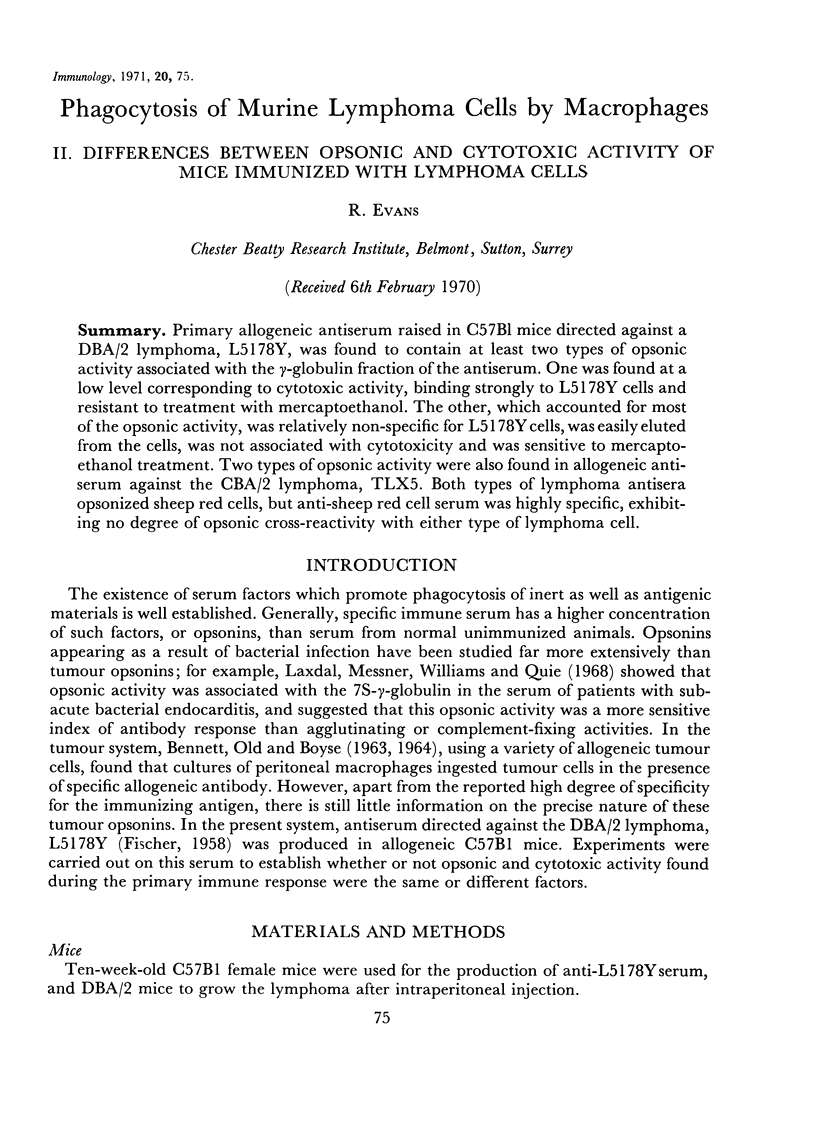
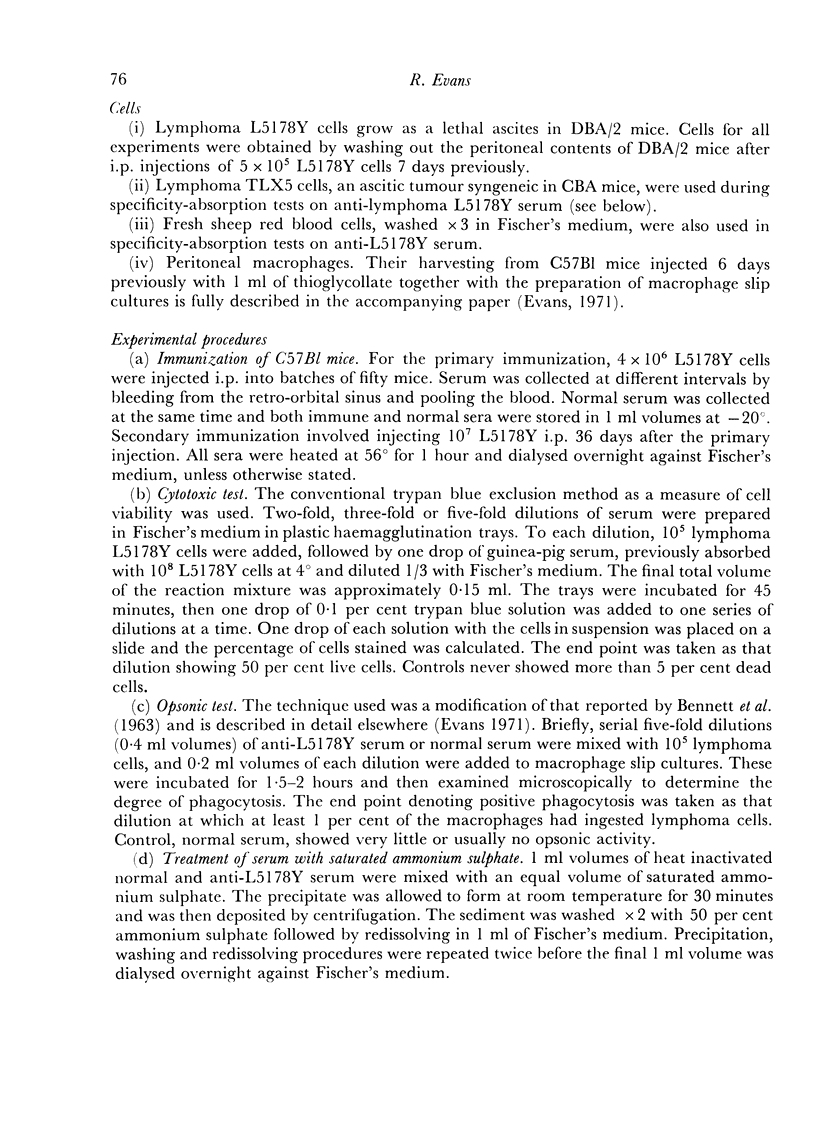
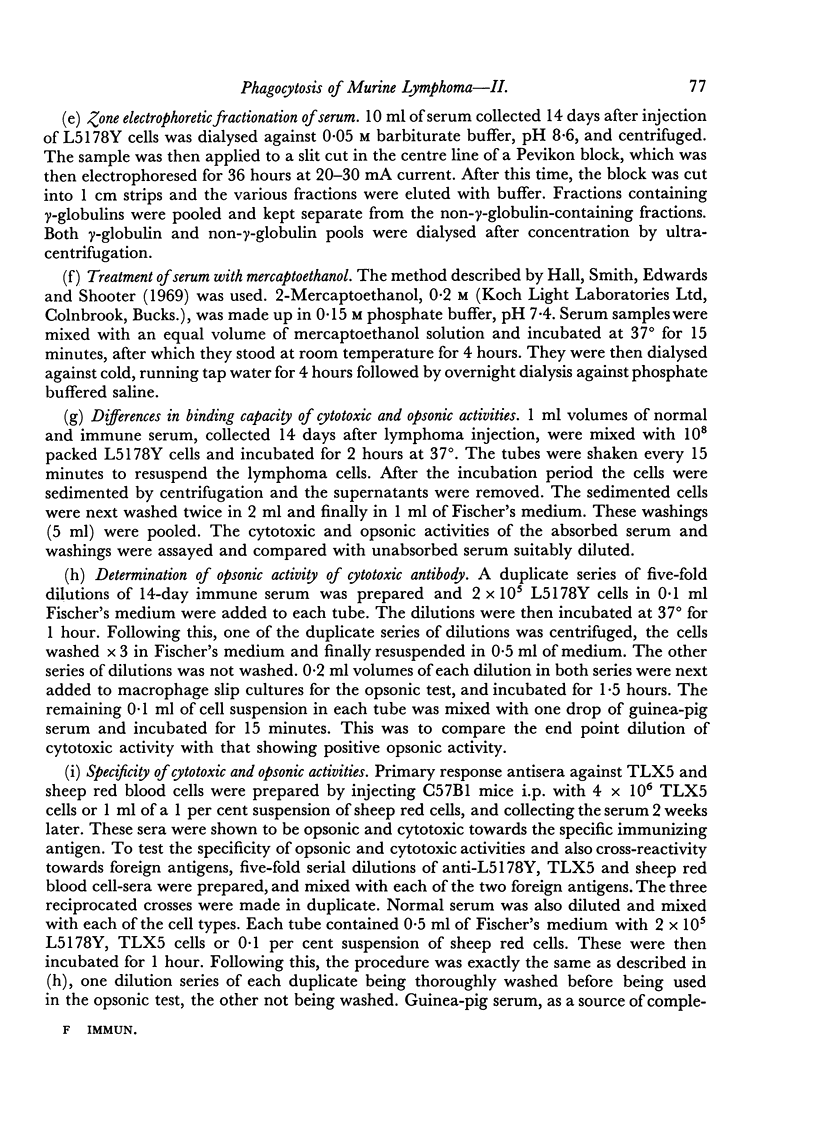
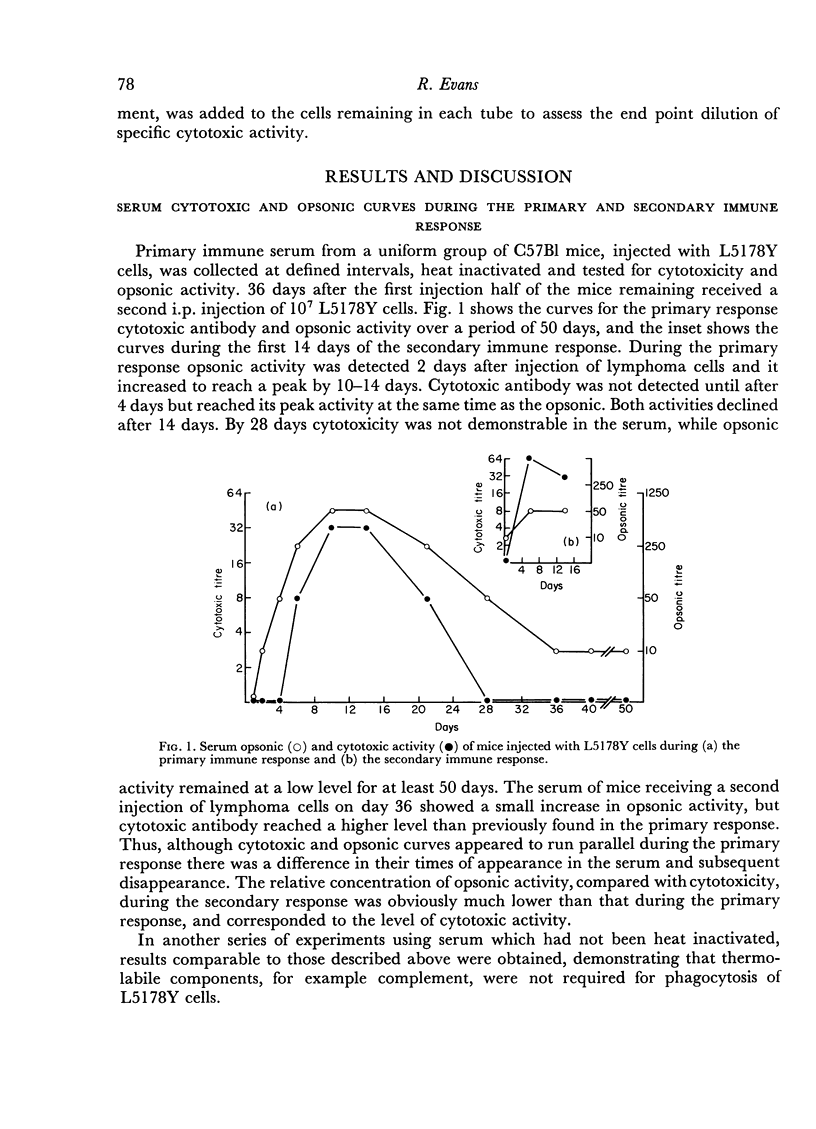
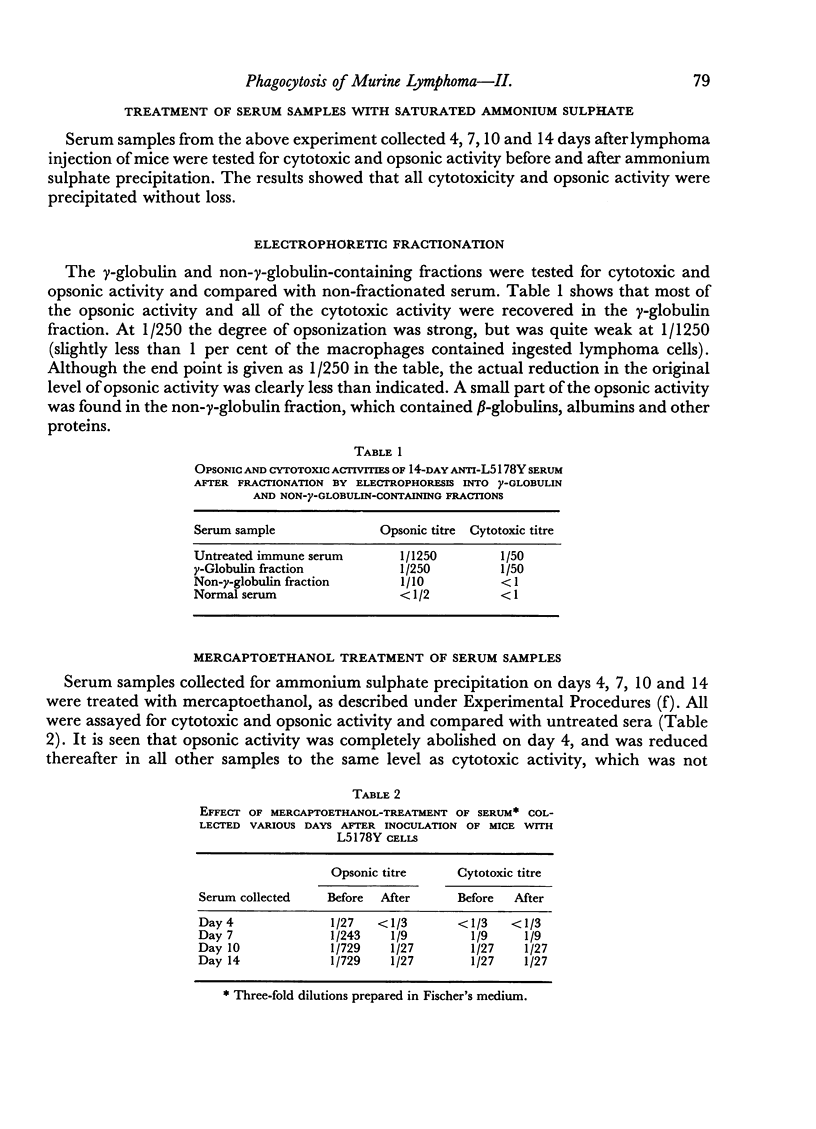
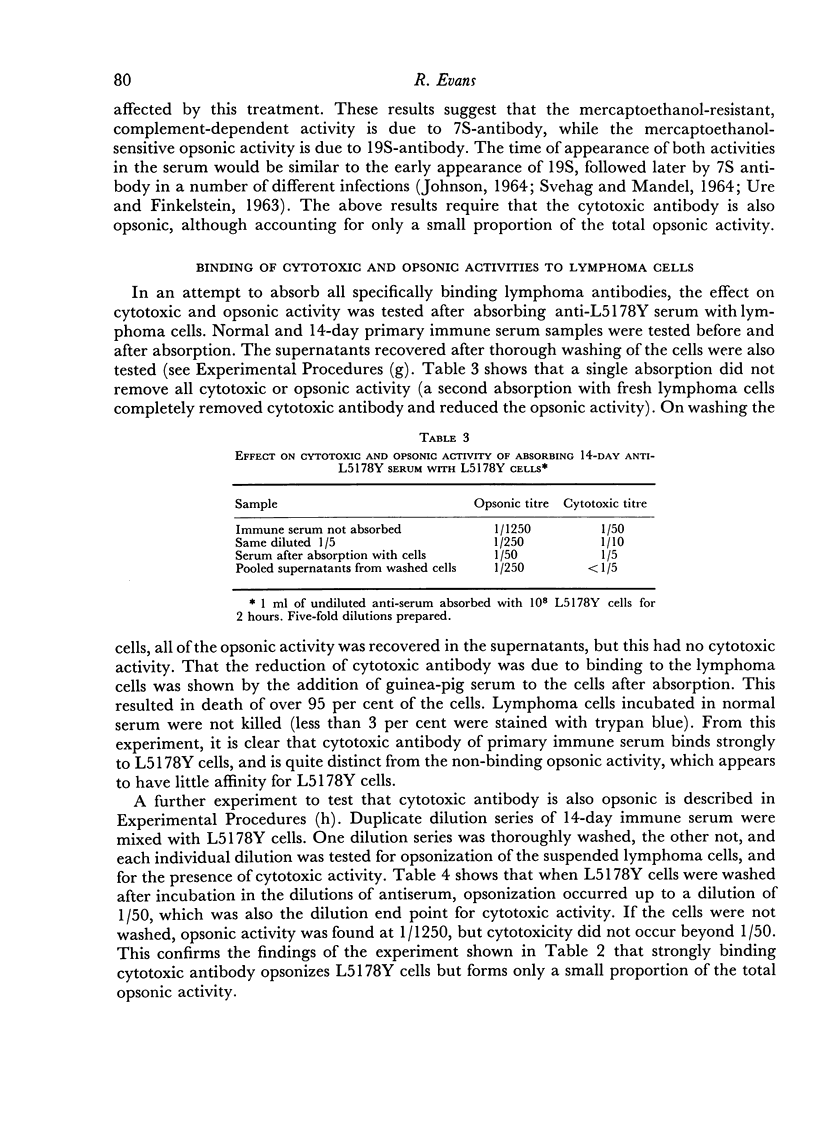
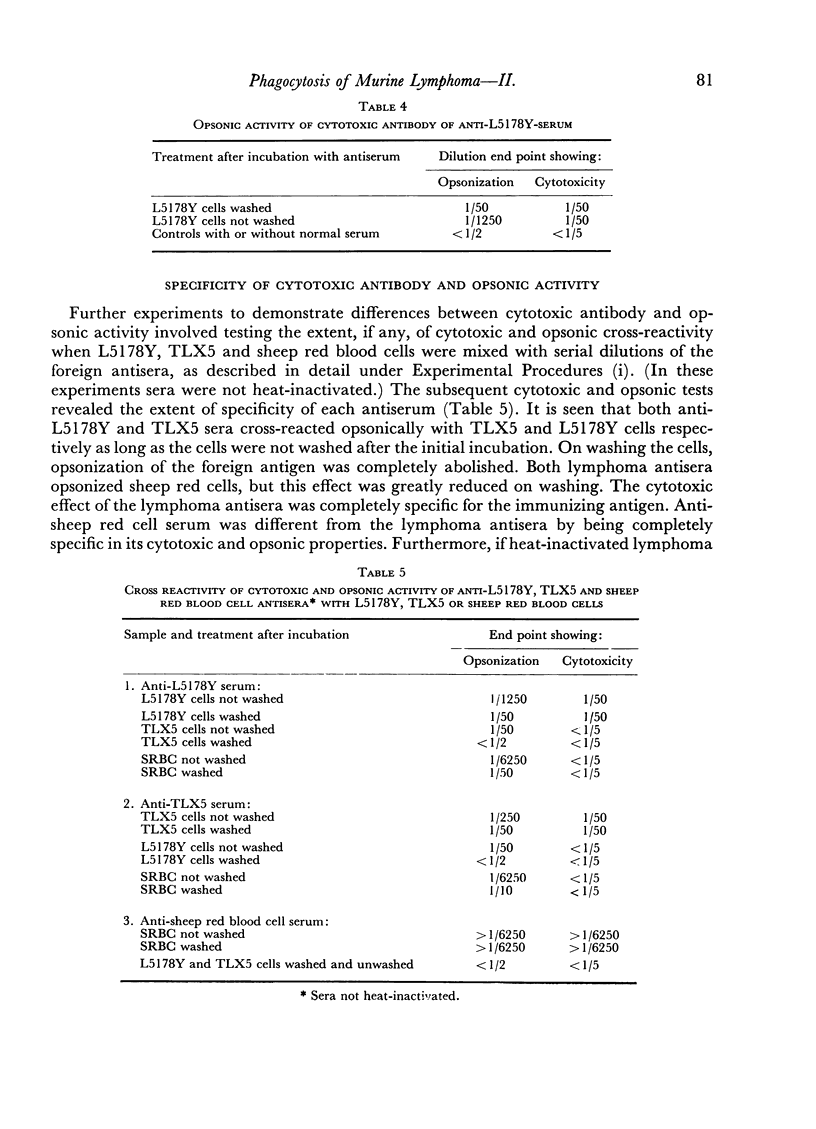
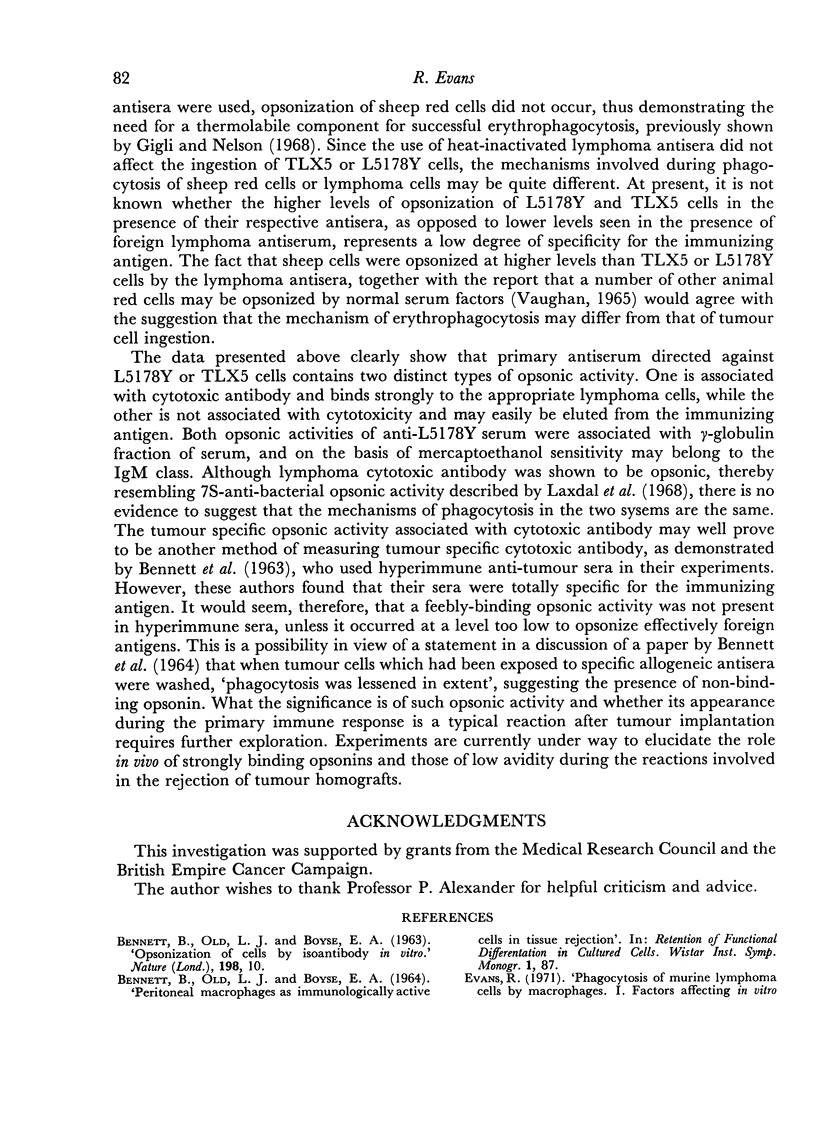
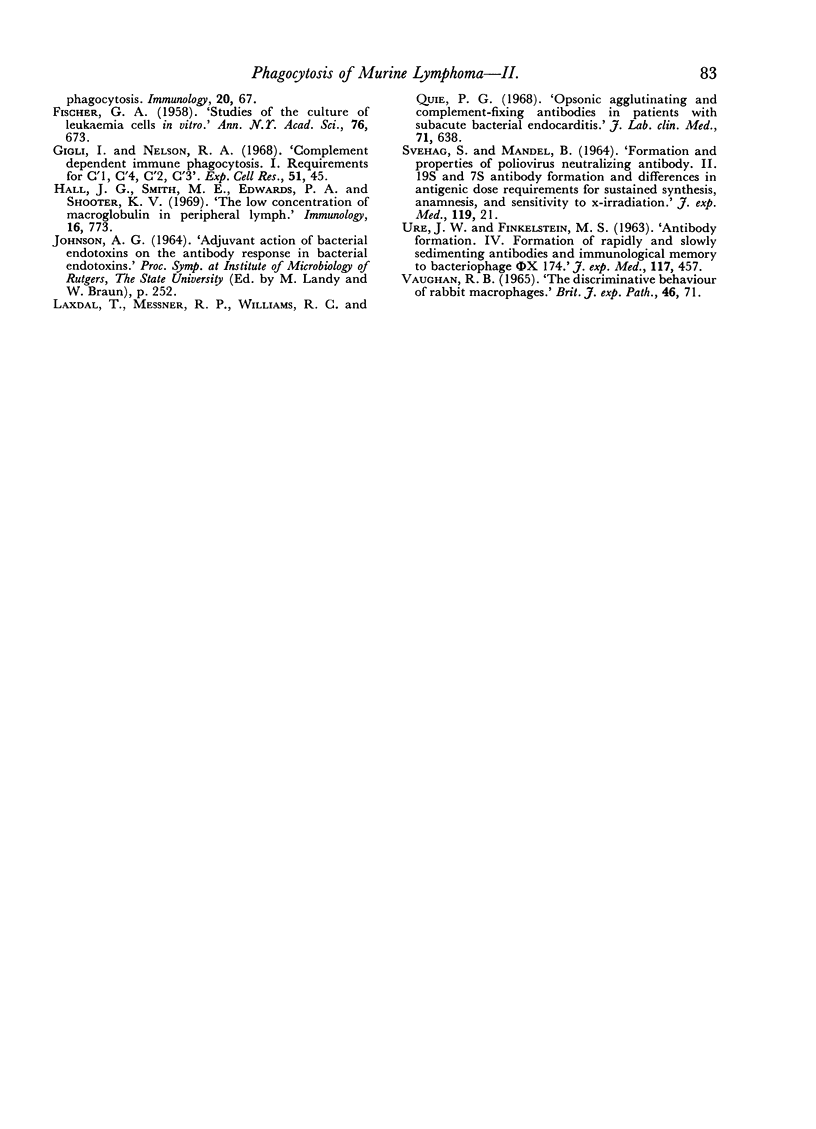
Selected References
These references are in PubMed. This may not be the complete list of references from this article.
- BENNETT B., OLD L. J., BOYSE E. A. Opsonization of cells by isoantibody in vitro. Nature. 1963 Apr 6;198:10–12. doi: 10.1038/198010a0. [DOI] [PubMed] [Google Scholar]
- Evans R. Phagocytosis of murine lymphoma cells by macrophages. I. Factors affecting in vitro phagocytosis. Immunology. 1971 Jan;20(1):67–74. [PMC free article] [PubMed] [Google Scholar]
- FISCHER G. A. Studies of the culture of leukemic cells in vitro. Ann N Y Acad Sci. 1958 Dec 5;76(3):673–680. doi: 10.1111/j.1749-6632.1958.tb54884.x. [DOI] [PubMed] [Google Scholar]
- Gigli I., Nelson R. A., Jr Complement dependent immune phagocytosis. I. Requirements for C'1, C'4, C'2, C'3. Exp Cell Res. 1968 Jul;51(1):45–67. doi: 10.1016/0014-4827(68)90158-4. [DOI] [PubMed] [Google Scholar]
- Hall J. G., Smith M. E., Edwards P. A., Shooter K. V. The low concentration of macroglobulin antibodies in peripheral lymph. Immunology. 1969 Jun;16(6):773–778. [PMC free article] [PubMed] [Google Scholar]
- Laxdal T., Messner R. P., Williams R. C., Jr, Quie P. G. Opsonic, agglutinating, and complement-fixing antibodies in patients with subacute bacterial endocarditis. J Lab Clin Med. 1968 Apr;71(4):638–653. [PubMed] [Google Scholar]
- SVEHAG S. E., MANDEL B. THE FORMATION AND PROPERTIES OF POLIOVIRUS-NEUTRALIZING ANTIBODY. II. 19S AND 7S ANTIBODY FORMATION: DIFFERENCES IN ANTIGEN DOSE REQUIREMENT FOR SUSTAINED SYNTHESIS, ANAMNESIS, AND SENSITIVITY TO X-IRRADIATION. J Exp Med. 1964 Jan 1;119:21–39. doi: 10.1084/jem.119.1.21. [DOI] [PMC free article] [PubMed] [Google Scholar]
- UHR J. W., FINKELSTEIN M. S. Antibody formation. IV. Formation of rapidly and slowly sedimenting antibodies and immunological memory to bacteriophage phi-X 174. J Exp Med. 1963 Mar 1;117:457–477. doi: 10.1084/jem.117.3.457. [DOI] [PMC free article] [PubMed] [Google Scholar]
- VAUGHAN R. B. THE DISCRIMINATIVE BEHAVIOR OF RABBIT PHAGOCYTES. Br J Exp Pathol. 1965 Feb;46:71–81. [PMC free article] [PubMed] [Google Scholar]


